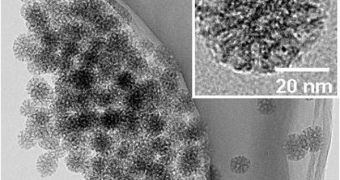Scientists at the Cornell University, in the United States, have recently announced the development of a new optical technology, which allows them to use a tiny beam of light in order to move nanostructures. The beam employs as little as one milliwatt of power in order to do this, but it can move structures that are about 12 nanometers in diameter, which is a rather large size. The structure's optical properties can be fundamentally altered as well, the team reports, saying that the silicon structures can be made from transparent opaque, and vice-versa.
Details of the amazing achievement are published in the early online issue of the respected scientific journal Nature, but will appear in an upcoming print edition as well. In charge of the investigation was Associate Professor of Electrical and Computer Engineering Michal Lipson, who worked together with Gustavo Wiederhecker, Long Chen, and Alexander Gondarenko, all postdoctoral researchers at the university. According to Lipson, the team's new achievement could be used to create advanced micro-electromechanical systems (MEMS) in the near future.
MEMS are nothing more than devices featuring moving parts, such as many mechanisms in various fields, but at the nanoscale. The construction of micro-optomechanical systems (MOMS) could also become a lot easier. These systems also include photonic circuits in addition to the moving parts, Lipson explains. He adds that the photons in sunlight carry with them a force that is inconsequential at the large scale. Sunlight doesn't knock us off our feet, for example. But, at the nanoscale, the effects photon streams can generate are fairly significant. “The challenge is that large optical forces are required to change the geometry of photonic structures,” he says.
Wiederhecker suggests that the new research could be used, for instance, to create a tunable filter to pass one particular optical wavelength, which may be of tremendous use in a number of applications, but especially in microscopy and in telescope-based studies. The technique could also be used to develop a method of turning light moving through a nanostructure “on” or “off,” by modifying the shape of the structure. This will most likely be heavily used in new MEMS and MOMS devices.

 14 DAY TRIAL //
14 DAY TRIAL //